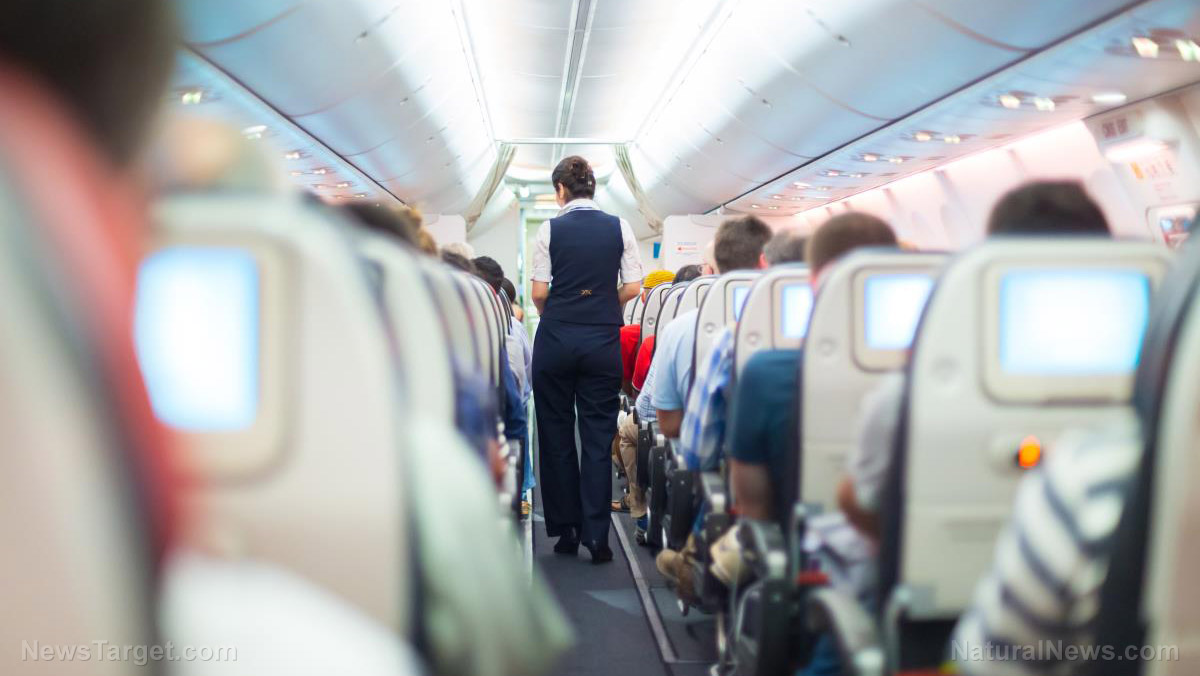Here’s how to protect yourself from airplane cooties
08/16/2019 / By Melissa Smith

Airplane cabins are blanketed with germs, so it’s easy to catch a disease if you don’t take extra measures to protect yourself. The odds of travelers carrying the flu on an airplane are especially high during flu season. Your risk of catching the flu is higher still in airplanes because you are in tight quarters sharing air with other passengers that could be sick.
It is very likely that bacteria are lurking on the seat back pocket, armrests, tray tables, the window shades, and lavatories. Researchers at Auburn University, in Alabama, investigated where bacteria could live long enough to cause disease in airplane passengers. They found that bacteria live in the seat pockets for eight days, rubber armrest and leather seat for a week, plastic window shade and tray table for three days, and steel toilet handle for two days. (Related: Airplane trays, seats and blankets are covered in fecal matter and bacteria, research shows.)
Here are some things you can do to protect yourself from airplane cooties.
- Avoid using the airplane lavatory – Toilets provide the perfect environment for bacteria to thrive, and the ones on airplanes are no exception. Try to empty your bladder beforehand and avoid drinking too many fluids before or during your flight. This will prevent you from needing to use the toilet. If you must go, use a napkin, towel, or a sanitary wipe to open the door latch. Then, throw it away. To open the bathroom door inward, use your elbow. Before sitting on the toilet, use a sanitary wipe or seat cover for it. It is also important to remember that the area around the small sink is also full of germs.
- Stay hydrated – When the mucous membranes in your nose and mouth start to dry out, your risk of catching the flu becomes higher. Pack a small bottle of nasal spray and lubricate your nose before you board and during mid-flight if it’s a long one.
- Pick a window seat – Many people like the aisle seat because they can easily access the restroom. However, it also makes them prone to the germs of every single person walking down the aisle. A window seat will reduce your exposure to these germs.
- Avoid touching surfaces that you don’t need to touch – Generally, avoid touching things that are not yours, such as those magazines in the seat back pocket in front of you.
- Wipe everything – Sanitize the armrests, seat belt, and tray table with wipes (and only if you need to use the tray table).
- Avoid using the seat back pockets – They tend to accumulate all sorts of stuff from other passengers.
- Hold your breath if someone coughs or sneezes nearby – Hold your breath for several seconds, or longer if you can, when someone coughs or sneezes. If you don’t, you might breathe in the germs that person is releasing.
- Avoid touching your eyes, mouth, and nose – The flu and other germs can enter through your eyes, nose, and mouth. So, if you touch your potentially contaminated hands to these body parts, you most likely will get ill.
- Cover any open wounds – If you have any cuts, deep scrapes, or wounds, cover them up with band-aids before getting on an airplane. An exposed cut or even a small skin tear can be an easy entry point for the flu or other germs into your bloodstream.
Prevention is always better than cure, so the next time you’re traveling by air, remember to follow these prevention tips.
Sources include:
Submit a correction >>
Tagged Under:
air travel, Airplanes, bacteria, Cough, crowded spaces, disease causes, disease prevention, Flu, germ transmission, germs, how-to, infections, influenza, prevention, remedies, travel
This article may contain statements that reflect the opinion of the author






















